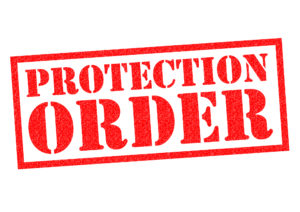Fighting a Restraining Order in New Jersey
By Travis Tormey posted in Domestic Violence on Monday, January 7, 2013

Restraining orders are a common type of case that I deal with, and different rules apply to these matters that actually don’t apply to criminal charges.
First of all, restraining orders and criminal matters are completely different. You can have a restraining order without any type of criminal charge, and visa versa. Sometimes after being charged in a criminal matter, the judge might impose a “no contact”. That is not a restraining order, but it is commonly confused to be one. Restraining orders can be filed against you when no criminal charges are filed, and frequently even if no actual violent incident takes place. The “initial restraining order” is based purely on the word of whoever files it and can be based on any predicate act of domestic violence: stalking, harassment, assault, terroristic threats, criminal mischief, etc.
Restraining orders are a huge inconvenience. They don’t show up on a background check when applying for jobs, but they can impact your life in many frustrating manners. If the restraining order is issued, you will be given a series of places to which you can no longer go. This could be a place like residence of in-laws, your kid’s school, or the restaurant where your girlfriend works. A violation, accidental or otherwise, can result in criminal contempt charges, which will show up on your record and can include jail time.
There are three things that have to exist in order for a final restraining order to issue, and as a result, there are three ways that I can fight against restraining orders. If I can cast doubt on any of the three requirements for a restraining order, it will not be issued.
The first requirement is that some incident of abuse or harassment took place. This is known as a predicate act of domestic violence. It is not enough for an alleged victim to claim that something bad happened, they actually have to prove it. This can be established by showing pictures, potentially revealing email or cell phone correspondence, testimony from the victim or any potential witnesses, etc. This is the first element that I have the opportunity to disprove in an attempt to get the restraining order thrown out. I can challenge the credibility of the witnesses, discredit any evidence that is admitted, and cross-examine the victim on any discrepancies with their version of the facts.
The second element required to pass a restraining order is a prior history of domestic violence. Proving at least one single instance is necessary, but it’s not enough to issue a restraining order. There needs to be an established past record of such incidences occurring. This is typically proven by pulling up past arrest reports, showing complaints that have been filed, referencing calls made to the police reporting such issues, or testimony from witnesses. Again, witness credibility comes into play, and either the complaining party can prove their case or not. If a prior history of abuse has taken place, there certainly should be a record of it, and if there isn’t, it’s going to be hard to prove in the courtroom.
The final element necessary to have a restraining order issued is to show that the victim in the case is reasonable to be in fear for their safety based on your actions. Even if one abusive incident in conjunction with a history of incidents are proven, this does not necessarily mean that a reasonable fear for one’s safety exists. For example, if the defendant in a restraining order case has consistently called the victim a “fat pig” and made a history of harassing phone calls consistently calling her names. This shows both a history of harassment and single incident of harassment, known as the predicate act of domestic violence. However, is it reasonable and logical for the complaining party to be in fear for her safety. Just because he was calling her names doesn’t mean any threats were made and doesn’t prove that she should be afraid of him. There is a lot of grey area in this argument, and it’s all about what one can prove.
If threatening voice mails or texts have been sent, if witnesses have heard threats, or if there has been a history of injurious action to the complaining party, then there could be a good case for a restraining order. If there has only been a consistent streak of harassing phone calls, one could certainly file criminal charges for harassment, but the case doesn’t convey any reasonable reason for the alleged victim to be afraid for his or her safety. As a result, the judge overseeing the matter has to make a judgment call on whether or not this person truly needs the protection provided by a restraining order. Casting doubt in this respect is another way that I defend against restraining order cases.
Need Lawyer for Restraining Order Hearing Hackensack NJ
Since restraining orders require a different burden of proof and are tried in a different court than criminal charges, it’s important to hire a lawyer with experience in these matters. Your legal representation will have a huge effect on your ability to defend yourself in this case. Find an experienced legal professional and get the best possible defense in your case to avoid being subjected to a restraining order.


